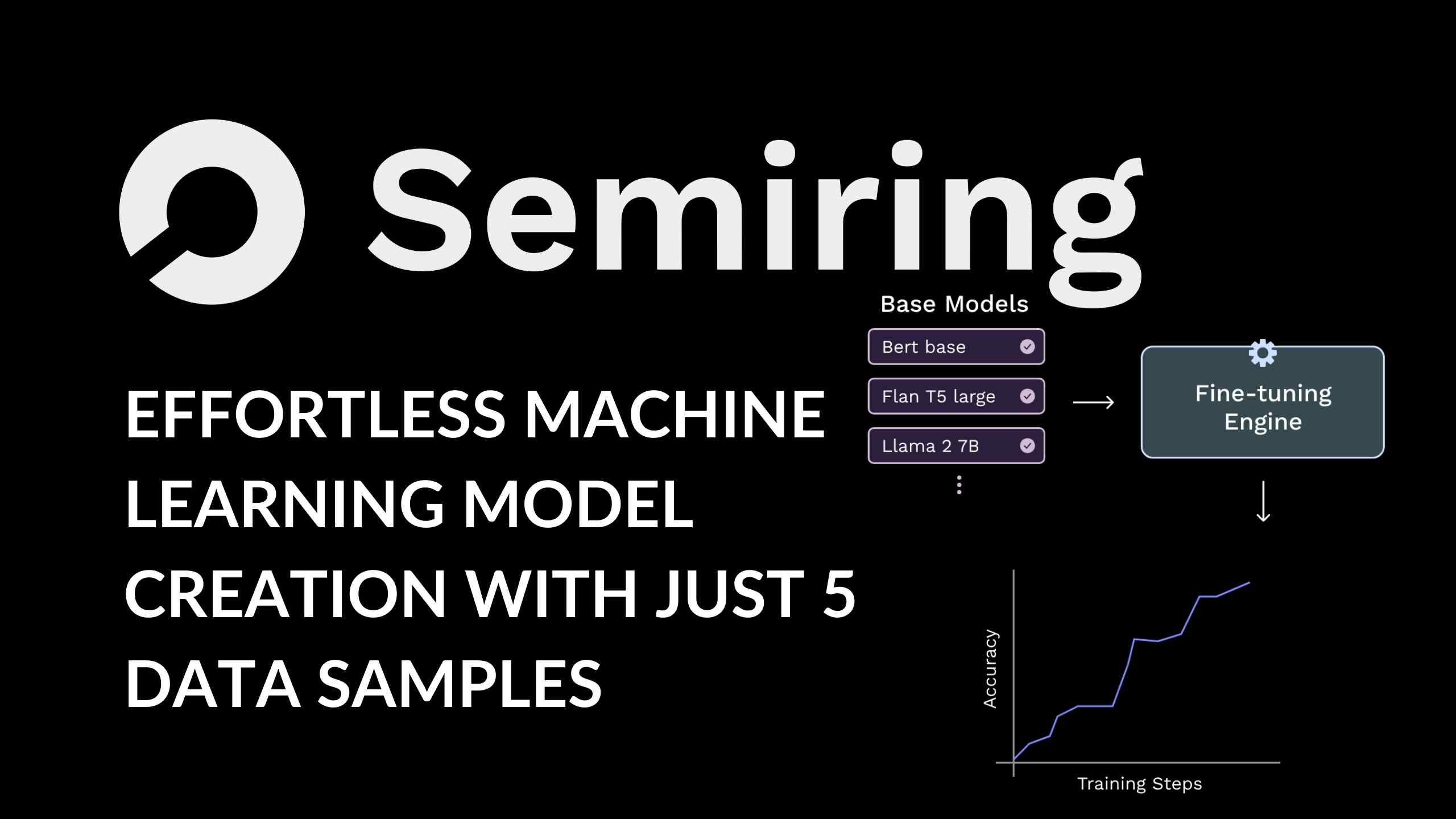Semiring AI: Effortless Machine Learning Model Creation with Just 5 Data Samples – Build, Fine-Tune, Deploy!
- AI Image Generators Software AI Writing Assistant Popular Tools AI Tools


Semiring AI: Effortless Machine Learning Model Creation with Just 5 Data Samples – Build, Fine-Tune, Deploy!
Introduction
In the vast landscape of machine learning, the process of creating, fine-tuning, and deploying models often seems complex and reserved for experts. Semiring AI breaks this barrier by offering a revolutionary approach – crafting powerful ML models from just 5 data samples. In this article, we explore how Semiring simplifies the entire model creation journey, making it accessible to everyone, regardless of their ML expertise.
Model Creation with Ease
How Does It Work?
Semiring manages the full pipeline of model creation, providing a streamlined process from generating synthetic data to training, evaluating, and deploying your AI. Let’s break down the steps:
Step 1: Craft Your Ideal Dataset
Leverage Semiring’s data generation platform to create a dataset tailored to your specific needs. The process includes:
- Advanced LLM Data Generation: Produce high-quality synthetic data with just a handful of labeled examples.
- Custom Data Support: Bring your own unlabeled data, and Semiring will handle the rest.
- Seamless Automatic Labeling: Let Semiring’s engine handle annotations, ensuring consistent and accurate labels.
Step 2: Effortlessly Fine-tune Your Model
Choose a base model from Semiring’s library, and the engine will automatically fine-tune it on your dataset. This step involves:
- Diverse Base Models: Semiring offers a list of pretrained models for various tasks and sizes.
- Automatic Fine-Tuning: The parameter optimization engine finds optimal settings for your model.
- Cloud-Based Training: Leave hardware concerns behind with no GPU requirements on your end.
Step 3: Seamlessly Deploy Your Model
Skip the complications of model deployment with Semiring. They provide a simple API for the models you create, including:
- Simple API Integration: Effortlessly incorporate Semiring’s API into your application with just a few lines of code.
- High-Speed Inference: Benefit from an API tuned for swift responses and optimal throughput.
- Cost-Efficient Usage: No need to pay for idle servers; only pay for what you use.
High Performance & Low Cost
Why Semiring?
Semiring stands out for delivering exceptional speed and cost-efficiency when evaluated against large language models and in-house solutions. Here’s a quick comparison:
| Features | Semiring | ChatGPT | In-house Model |
|---|---|---|---|
| Data Requirements | Low | Low | Very High |
| Development Cycle | Short | Short | Very Long |
| Training Cost | Low | Low | Very High |
| Inference Cost | Low | Very High | Low |
| Inference Speed | Fast | Very Slow | Fast |
Usage Across Industries
Example Use Cases
Semiring’s models find applications across various industries, showcasing their versatility. Some examples include:
Industry Classification
Categorize companies into their respective sectors by analyzing company descriptions or landing pages. Semiring’s model discerns contextual cues to determine the industry of a company.
Search Result Highlighting
The highlighting model dynamically accentuates the most important segments of text based on the user’s search query, enhancing the search result experience.
Title Generation
Create an appropriate title for a document or item by considering its content, description, and metadata. This involves generating titles for news articles or product listings.
Applicant Job Matching
Efficiently allocate human resources by matching applicants to job positions based on their resumes and job descriptions.
Conclusion
In conclusion, Semiring AI emerges as a game-changer in the field of machine learning. By democratizing the model creation process, it empowers individuals and businesses to harness the power of AI without the need for extensive expertise. Explore the possibilities of effortless machine learning with Semiring, and witness a new era of accessible AI innovation.
Contact Semiring AI | Learn More











